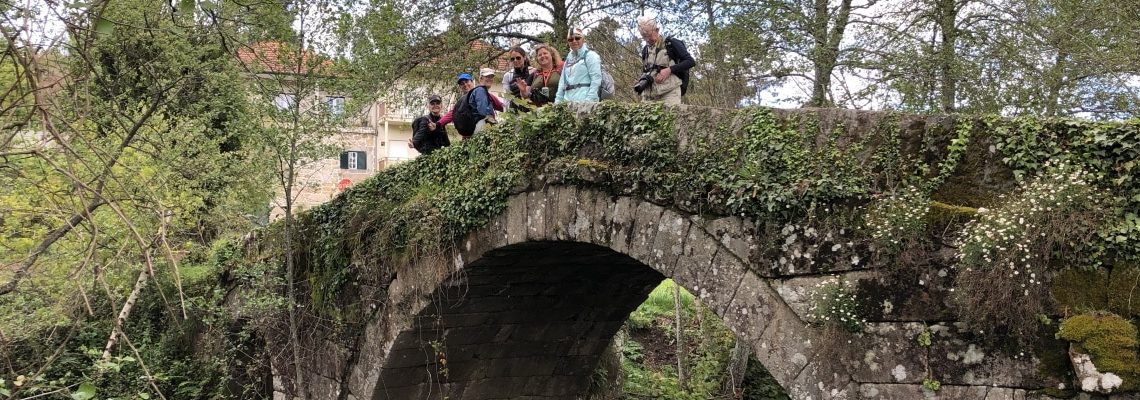The Camino de Santiago or Way to Santiago, is known for its yellow arrows and distinct scallop shell symbols leading to Santiago de Compostela - and to the tomb of the Apostle Santiago (Saint James). Whichever Camino or "Way" one takes: the Portuguese, Coastal, French or Basque, whether hiking, biking or riding on horseback, the Camino de Santiago travels through numerous beautiful and historic locations and is a unique and enriching life experience. According to oldest Jacobean legend, the Virgin Mary visited the Apostle Santiago "el Mayor" (James the Great) in Muxía - today found on the Camino de Fisterra and Muxía in Galicia - as he sat by the seashore, exhausted and saddened by the difficulty of his evangelical mission. The Virgin was said to have arrived by a stone boat that remained after she departed. This legend is tied closely to Atlantic myths about stone ships stemming from the oral pagan culture of the pre-Christian period. Almost two thousand years later, the popular imagination continues to see the hull, sail and rudder of that miraculous boat in three large rocks adjacent to the Virxe da Barca (Our Lady of the Boat) sanctuary. After the region converted to Christianity, it became one of most popular sanctuaries in the northwest of the peninsula. When Santiago ended up martyred in Jerusalem in 44 AD, his disciples chose to lay his body to rest in the land where he preached, following a tradition for Christ’s apostles. Legend has it that they transported his remains in a stone ship which sailed miraculously from Palestine to what is present day Galicia, also considered the edge of the world. Although this tale is not mentioned in the Codex Calixtinus (a 12th c. guide for pilgrims) the legend may be related to ships that were used
The Camino de Santiago or Way to Santiago, is known for its yellow arrows and distinct scallop shell symbols leading to Santiago de Compostela – and to the tomb of the Apostle Santiago (Saint James). Whichever Camino or “Way” one takes: the Portuguese, Coastal, French or Basque, whether hiking, biking or riding on horseback, the

